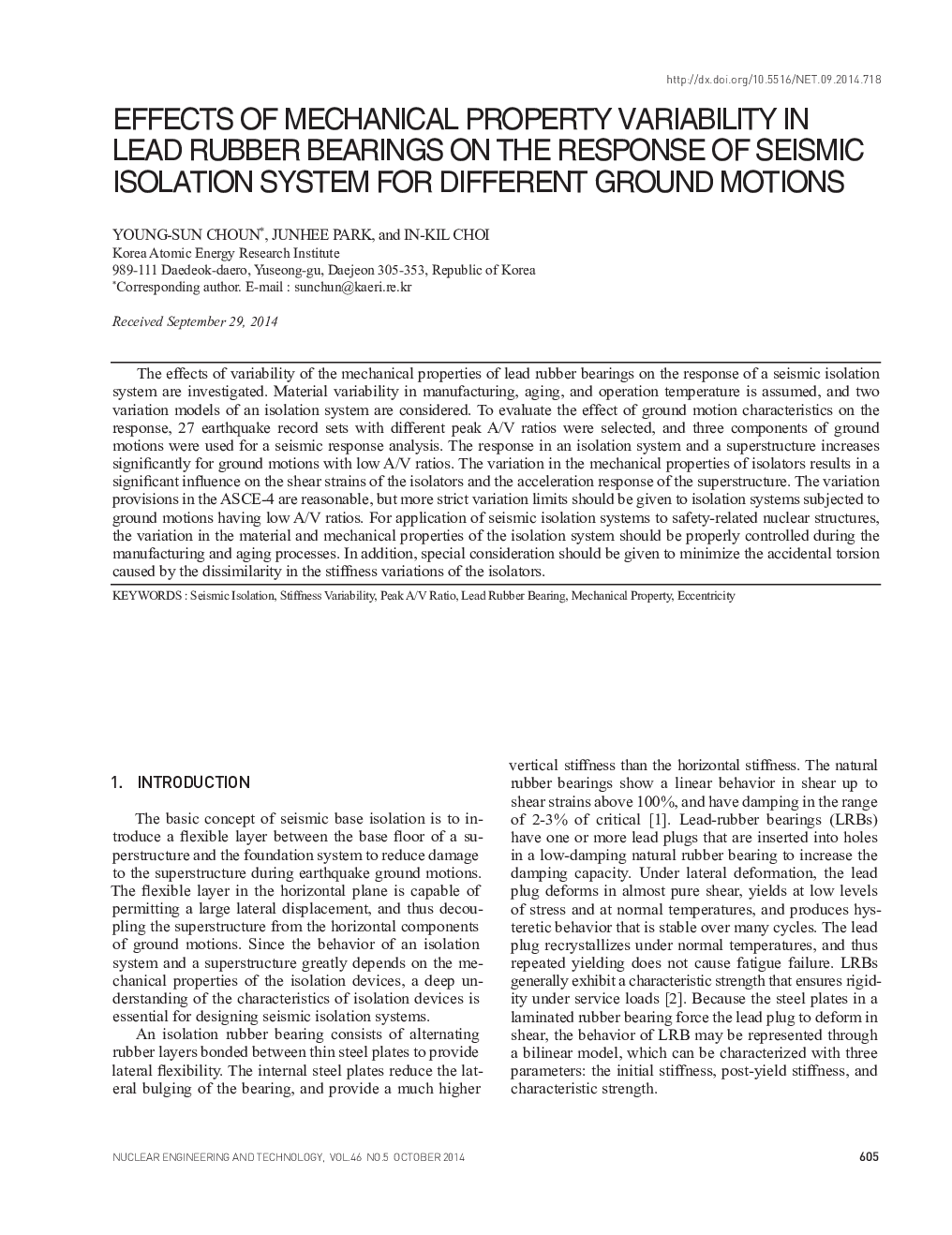| Article ID | Journal | Published Year | Pages | File Type |
|---|---|---|---|---|
| 1740204 | Nuclear Engineering and Technology | 2014 | 14 Pages |
Abstract
The effects of variability of the mechanical properties of lead rubber bearings on the response of a seismic isolation system are investigated. Material variability in manufacturing, aging, and operation temperature is assumed, and two variation models of an isolation system are considered. To evaluate the effect of ground motion characteristics on the response, 27 earthquake record sets with different peak A/V ratios were selected, and three components of ground motions were used for a seismic response analysis. The response in an isolation system and a superstructure increases significantly for ground motions with low A/V ratios. The variation in the mechanical properties of isolators results in a significant influence on the shear strains of the isolators and the acceleration response of the superstructure. The variation provisions in the ASCE-4 are reasonable, but more strict variation limits should be given to isolation systems subjected to ground motions having low A/V ratios. For application of seismic isolation systems to safety-related nuclear structures, the variation in the material and mechanical properties of the isolation system should be properly controlled during the manufacturing and aging processes. In addition, special consideration should be given to minimize the accidental torsion caused by the dissimilarity in the stiffness variations of the isolators.
Related Topics
Physical Sciences and Engineering
Energy
Nuclear Energy and Engineering
Authors
YOUNG-SUN CHOUN, JUNHEE PARK, IN-KIL CHOI,
